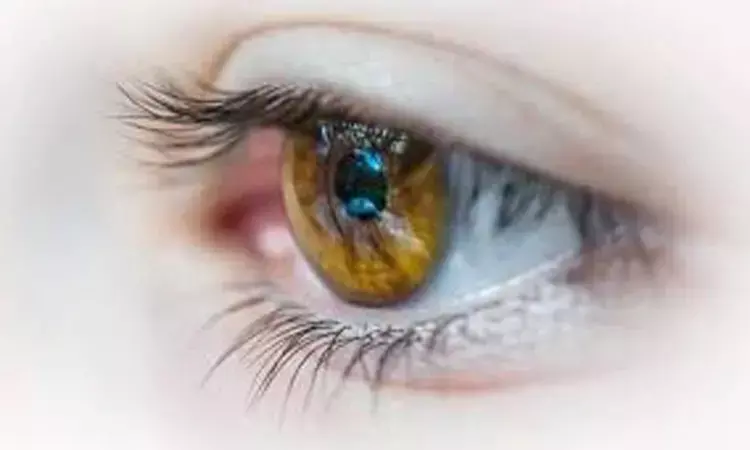- Home
- Medical news & Guidelines
- Anesthesiology
- Cardiology and CTVS
- Critical Care
- Dentistry
- Dermatology
- Diabetes and Endocrinology
- ENT
- Gastroenterology
- Medicine
- Nephrology
- Neurology
- Obstretics-Gynaecology
- Oncology
- Ophthalmology
- Orthopaedics
- Pediatrics-Neonatology
- Psychiatry
- Pulmonology
- Radiology
- Surgery
- Urology
- Laboratory Medicine
- Diet
- Nursing
- Paramedical
- Physiotherapy
- Health news
- Fact Check
- Bone Health Fact Check
- Brain Health Fact Check
- Cancer Related Fact Check
- Child Care Fact Check
- Dental and oral health fact check
- Diabetes and metabolic health fact check
- Diet and Nutrition Fact Check
- Eye and ENT Care Fact Check
- Fitness fact check
- Gut health fact check
- Heart health fact check
- Kidney health fact check
- Medical education fact check
- Men's health fact check
- Respiratory fact check
- Skin and hair care fact check
- Vaccine and Immunization fact check
- Women's health fact check
- AYUSH
- State News
- Andaman and Nicobar Islands
- Andhra Pradesh
- Arunachal Pradesh
- Assam
- Bihar
- Chandigarh
- Chattisgarh
- Dadra and Nagar Haveli
- Daman and Diu
- Delhi
- Goa
- Gujarat
- Haryana
- Himachal Pradesh
- Jammu & Kashmir
- Jharkhand
- Karnataka
- Kerala
- Ladakh
- Lakshadweep
- Madhya Pradesh
- Maharashtra
- Manipur
- Meghalaya
- Mizoram
- Nagaland
- Odisha
- Puducherry
- Punjab
- Rajasthan
- Sikkim
- Tamil Nadu
- Telangana
- Tripura
- Uttar Pradesh
- Uttrakhand
- West Bengal
- Medical Education
- Industry
Central serous chorioretinopathy closely associated with intense exercise: Study

Italy: A new study by Felice Cardillo Piccolino and colleagues found that intense physical activity (PA) associates with a 5-fold increase in the risk of central serous chorioretinopathy (CSCR). It was published in the American Journal of Ophthalmology.
Consecutive patients with active central serous chorioretinopathy and a comparable control group of healthy volunteers were included in this case-control research, which was conducted across many centers. With the help of a condensed version of the International Physical Activity Questionnaire, both groups were questioned on their PA. For the activities demanding intense effort and to calculate the amount of energy expended represented in the metabolic equivalent of activity, the Ainsworth Compendium of PAs was used as a reference (MET). The primary outcome metric was in the two groups, a moderate/high practice of vigorous PA was contrasted with a low/absent practice of vigorous PA.
The key findings of this study were:
1. The study comprised 105 healthy control subjects and 105 individuals with CSCR.
2. In comparison to the control group, 63.5% of cases with CSCR and 26% of cases showed moderate to high vigorous PA respectively.
3. In the CSCR group, the vigorous PA MET values were 2173.2 ± 2081.5, while in the control group, they were 1216.3 ± 524.
4. With moderate to high levels of vigorous PA, there was a 5.58% chance of developing an illness.
In conclusion, the findings of this study suggest that in people susceptible to central serous chorioretinopathy, frequent and strong Physical Activity and the hypertension episodes it brings on might upset the delicate hemodynamic balance in the choroid, increasing choroidal vascular decompensation and active illness.
Reference:
Piccolino, F. C., Fruttini, D., Eandi, C., Nicolò, M., Mariotti, C., Tito, S., & Lupidi, M. (2022). Vigorous Physical Activity as a Risk Factor for Central Serous Chorioretinopathy. In American Journal of Ophthalmology. Elsevier BV. https://doi.org/10.1016/j.ajo.2022.08.002
Neuroscience Masters graduate
Jacinthlyn Sylvia, a Neuroscience Master's graduate from Chennai has worked extensively in deciphering the neurobiology of cognition and motor control in aging. She also has spread-out exposure to Neurosurgery from her Bachelor’s. She is currently involved in active Neuro-Oncology research. She is an upcoming neuroscientist with a fiery passion for writing. Her news cover at Medical Dialogues feature recent discoveries and updates from the healthcare and biomedical research fields. She can be reached at editorial@medicaldialogues.in
Dr Kamal Kant Kohli-MBBS, DTCD- a chest specialist with more than 30 years of practice and a flair for writing clinical articles, Dr Kamal Kant Kohli joined Medical Dialogues as a Chief Editor of Medical News. Besides writing articles, as an editor, he proofreads and verifies all the medical content published on Medical Dialogues including those coming from journals, studies,medical conferences,guidelines etc. Email: drkohli@medicaldialogues.in. Contact no. 011-43720751


